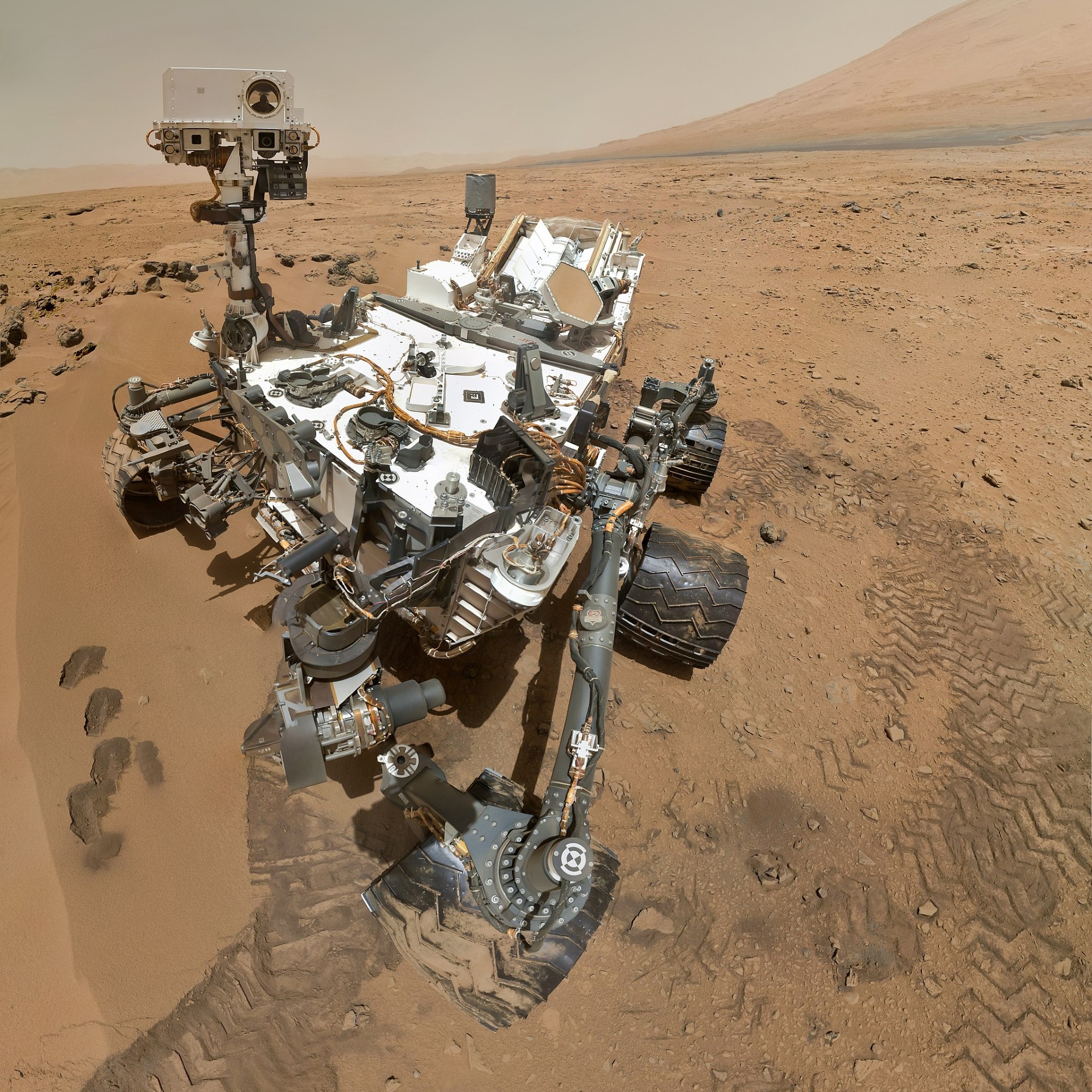
What Do You Need to Build a Planetary Rover?
December 23, 2020 - Emily Newton
Revolutionized is reader-supported. When you buy through links on our site, we may earn an affiliate commision. Learn more here.
Humanity has dreamed of traveling the stars, but unfortunately, the universe is hostile to human life. Before astronauts can start setting foot on alien planets, robots are sent to do the job first. As of 2020, Mars is the only planet that’s entirely populated by robots. Perhaps someday there will be even more. What does it take to build a planetary rover that can withstand everything the universe can throw at it?
What Will the Planetary Rover Do?
When designing a rover, engineers first need to consider what sort of task they want their creation to perform. Do scientists need it to take samples of various types of rocks and soil as it explores? Will the rover need to traverse different kinds of terrain? Will it stay in constant contact with Earth or send back packets of information on a regular schedule?
Once designers have an idea of the kind of tasks the rover will perform on the alien planet, it becomes easier to create the final design. They will better understand what the device will face after it completes its long journey and can start its work.
Breaking Down the Basics
No matter what a planetary rover will do once they reach their destination, there are some basic pieces of equipment engineers need to include in their design. This includes but isn’t limited to a wide variety of items, such as:
- A body that will house all the rover’s equipment and everything needed for its operation.
- A brain that can control the rover directly and communicate with home base to obtain new orders from operators back on Earth.
- Arms that the rover can use to interact with the alien planet. These may have tools or sensors on the end or come equipped with gripping hands to pick up samples.
- A head and neck that contains cameras and other sensors for observing the area directly around the rover. The exact design of this component will vary depending on where it’s going and what it is programmed to do when it gets there.
- Legs, wheels or other tools to traverse the landscape. The design will depend on what the rover will face when it reaches its destination. Mars rovers have used both wheels and treads with various degrees of success. Future models may use legs or, in the case of the MarsBees, even wings.
- A power source to keep everything running. Previous rovers have used a combination of nuclear, solar and battery power to keep themselves running on the Martian surface. However, as exploration moves further from the sun, solar power won’t be as viable for providing energy for a planetary rover.
These six things are really all that’s needed to build a rover. Although it sounds pretty simple, it gets much more complicated from here. There’s a reason they call it rocket science, after all.
Building Prototypes Here on Earth
Before scientists and engineers can load up their rover in the cargo container of a rocket, they need to build full-sized prototypes here on Earth. There’s no point in spending millions of dollars on a rover if it’s going to break down and stop functioning as soon as it touches the surface of an alien planet. That wastes a lot of money, and considering how long it takes to reach most of the planets in the solar system, a lot of time, too.
The rover will need to pass various prototype phases before it’s ready for launch. Engineers polish and tweak the design until they’re confident the machine will perform as intended. The goal is to work out as many bugs and solve as many problems as possible before launch. It’s a lot easier to fix issues while on Earth than it is at their destination.
How Does a Planetary Rover Survive Outer Space?
There’s one thing that’s difficult to prepare for while building rovers — the sheer harshness of outer space. A rover is subject to extreme heat and cold, impacts, gravity and excessive speeds, as well as radiation — and that’s just on the trip there. Once it lands on Mars or another alien planet, there are all sorts of variables to consider.
For example, sandstorms are an enormous threat on the red planet. In fact, NASA lost contact with the Opportunity rover after a massive sandstorm covered more than half the planet’s surface.
Rovers are designed with alloys and other materials that can survive the harsh conditions in outer space. Kevlar and aluminum are popular choices, and there’s also a variety of reinforced carbon composites and other similar materials that can survive and function in the cold dark of space.
Exploring an Alien World
As of 2020, humans have only sent rovers to Mars, with the rest of interstellar exploration limited to probes and orbiters. Scientists will eventually need to create rovers capable of exploring ever-distant worlds. Engineers are already working on BRUIE, an aquatic rover that won’t be rolling around the surface like Curiosity and Opportunity. Instead, BRUIE will dive under the ice on frozen moons like Europa and Enceladus. They’re testing this submersible rover right now by sending it under the ice in frozen climates like Antarctica.
Gas giants will require something that can withstand the heat and pressure these massive planets generate. Maybe scientists will create bird-rovers that can dive in and out of their atmospheres, taking samples and exploring the thick cloud layers. These rovers might be able to explore planets like Venus, as well. The planet named for the Roman Goddess of Love sees some of the highest temperatures in the solar system because of its thick atmosphere.
The only thing limiting engineers and designers at this point is funding and imagination. They need to have a destination in mind before they can start creating a new rover. Maybe someday we will create a one-size-fits-all rover to send anywhere in the galaxy. For the moment, each adventurous robot is a custom creation, designed solely for the planet it will call home.
Staying in Touch With Home Base
One of the most important things to consider when creating a rover is how it will communicate with mission control here on Earth. NASA engineers can program the rovers with a limited amount of autonomy, but there must also be a way to communicate and collect any data that the devices record as they explore alien planets. Most current rovers use ultra-high frequency (UHF) radio waves to send information and receive orders. Right now, it takes between five and 20 minutes for the radio signal to travel from the sender to the receiver — and the same amount of time to send it back.
The further human exploration moves from Earth, the longer it will take to send and receive information. Rovers will need increased autonomy in some sectors just to keep themselves safe and running, especially in emergencies. For example, the Parker Solar Probe is currently orbiting the sun. Due to the distance, it takes about eight minutes to send or receive data. One wrong move and the probe could find itself destroyed in less than a second, so it has to be able to make some decisions on its own because it can’t afford to wait for NASA to respond with new orders.
Following in Planetary Rovers’ Footsteps
Ultimately, the goal of a rover isn’t just information gathering. These little robots are swiftly paving the way for astronauts to take that first step on Mars or even further away. After all, there’s a whole universe to explore. Planetary rovers are little mechanical explorers that are making sure it’s safe for humans out there in the blackness of space.
Perhaps someday, human astronauts can literally follow in their footsteps on another planet. Thanks to rovers and scientific advancements, anything is possible.
Featured Image Source: NASA/JPL-Caltech/Malin Space Science Systems / Derivative work including grading, distortion correction, minor local adjustments, crop and rendering from tiff-file: Julian Herzog, Public domain, via Wikimedia Commons
Revolutionized is reader-supported. When you buy through links on our site, we may earn an affiliate commision. Learn more here.
Author
Emily Newton
Emily Newton is a technology and industrial journalist and the Editor in Chief of Revolutionized. She manages the sites publishing schedule, SEO optimization and content strategy. Emily enjoys writing and researching articles about how technology is changing every industry. When she isn't working, Emily enjoys playing video games or curling up with a good book.




